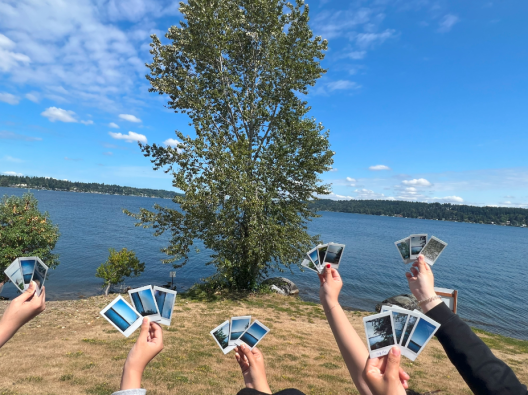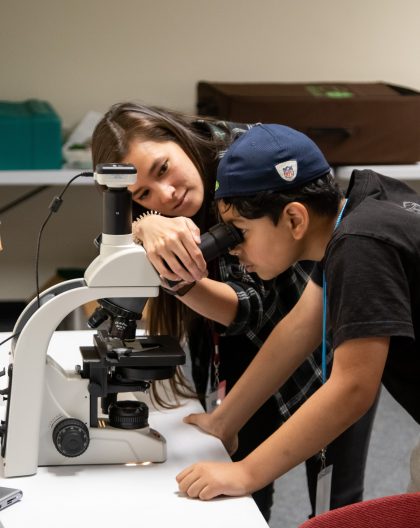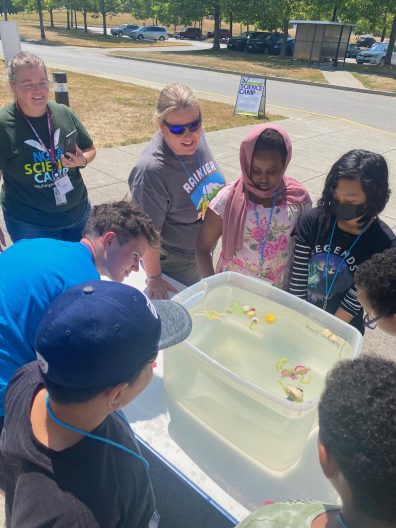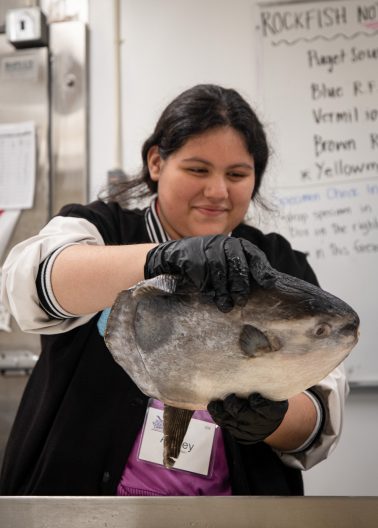Diving Deeper into NOAA Science Camp

Summers, science, and camps—oh my! For the last 20 years, Washington Sea Grant (WSG), NOAA’s West Coast offices, and Pacific Northwest marine education organizations have teamed up each July to host the annual NOAA Science Camp. One might ask, “What is NOAA Science Camp?”, and after spending the last year learning exactly that, I’m here to tell you all about it.
Since the start of the year, I followed in the footsteps of numerous SMEA students and began working with WSG as the Education Programs Student Assistant. This role, long held by SMEA graduate students, immerses the student in community outreach, collaboration, and education to encourage the West Coast’s aspiring young scientists to get involved in marine sciences by working hand-in-hand with the region’s most inspiring and accomplished scientists.
Thanks to the global pandemic, the Science Camp team found themselves taking a two-year hiatus from in-person events. During that time, however, camp staff provided a virtual camp experience and strategized to reinstate in-person camp activities in a safe way. So, the 2023 NOAA Science Camp was back to face-to-face fun with a fresh new look!

The foundation of Science Camp is simple: invite future scientists to NOAA’s Sand Point campus where a handful of NOAA offices engage campers in a wide array of hands-on activities to get a sneak peek of what being a scientist looks and feels like. Campers collaborate with working scientists who specialize in a host of marine disciplines, from marine mammals to fisheries to restoration to oceanography. During Science Camp, our NOAA colleagues aim not only to help young local students gain insight into what marine research looks like at NOAA and see how one day they could fill these same scientists’ shoes, but also—and this is arguably the top priority of Science Camp—make science camp fun.
As campers partake in The Great Plankton Race, they’re challenged to use household odds and ends like paper clips, string, clay, and marbles to create a perfectly buoyant “phytoplankton” that will float and beat out their competition. In the fisheries session, they test their gumption as they dissect giant ocean sunfish (Mola mola) or tiny perch while learning about the intricacies of the Pacific salmon migration. They bounced from learning how to identify humpback flukes and other aquatic critters in the marine mammals portion to understanding how to chart a nautical course for their very own vessel in the charting session. And what would summer camp be without camp games? When campers aren’t putting on their thinking caps with NOAA scientists or participating in marine-themed activities like trying on safety suits or learning of a food web’s intricacies, staff make sure to keep camp fun with Red Rover, Eagle’s Nest, and every other camp field game you can imagine.
Historically, the NOAA Science Camp team has collaborated with Pacific Northwest marine education and conservation organizations to raise awareness of this unique opportunity and help encourage student participation in the week-long camp. Oftentimes through awareness from these same organizations, each morning, parents drop off their campers—bursting with energy— for an exciting day at the Sand Point campus, and then return to pick up those same—now exhausted—campers later that afternoon. This year, however, looked a bit different.
With the back and forth between virtual and in-person events, I was lucky enough to work alongside WSG Education Specialist, Maile Sullivan, who had us eager to add a spin on the usual NOAA Science Camp programming. Maile, a coral enthusiast and SMEA graduate herself, has always been the first to jump at the opportunity to connect with our Salish Sea communities about the magic of the ocean and why its health is crucial. Instead of jumping right back into open registration, our team decided to collaborate with local education institutions to see how we could make this first year back special.

Enter Showalter and Rainer Prep Middle Schools. Joined by enthusiastic physical education, science, and math teachers, 25 sixth, seventh, and eighth graders embarked on a week-long journey that had them stepping outside of their comfort zones and into the underwater world of NOAA Science Camp. As they sauntered off their school buses, some students appeared skeptical, unsure of their futures in marine science and instead interested in becoming the next Taylor Swift or TikTok influencer, which evidently has little to do with the ocean. But, because this truly was a hybrid camp, we sought to challenge the status quo and go right to the source to show these students the most exciting parts of being a scientist.

Each day, we challenged students to put their science hats on, work together, and ask questions to better understand the full scope of what a career in marine science could look like. Not only did we ask them to “draw a scientist” and add their own special characteristics of what they thought a scientist was, but guide them away from the “typical” look of a scientist and to instead challenge the status quo. Typically, students would work together to solve a week-long marine challenge incorporating all of their knowledge from their different camp sessions. This year our team introduced new activities and sessions such as social sciences and a new take on marine debris, while shifting from the camp’s typical end-of-week schedule to a field trip to the Seattle waterfront. They instead integrated what they learned throughout the week through group beach rotation at the Olympic Sculpture Park tidepools and heard from long-time Seattle Aquarium beach naturalists before trekking towards their immersive scavenger hunt at the Seattle Aquarium.
The sunny, mid-summer week quickly came to an end with tons of new memories and only a few sunburns (mainly on myself).The campers piled into their school buses, full of new friends and experiences from their first ever NOAA Science Camp. Our budding marine scientists compared their tidepool discoveries and commented on their new knowledge about the “cuddly” harbor seals, clearly confident in their newfound science skills and eager to share with their new community. And while I’m not convinced we encouraged all of the campers away from their Taylor Swift-like aspirations, I have no doubt that our future and the futures of these new scientists shines bright—like that wonderful sunny camp week in July—with possibility.
Washington Sea Grant and NOAA had obtained parental media permission for all minor photographs used.